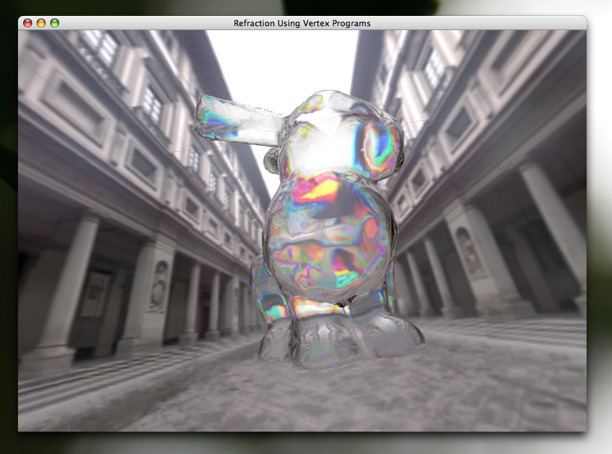Developer(s) JogAmp Community Operating system | ||
 | ||
Stable release 2.3.2 / October 10, 2015; 16 months ago (2015-10-10) Preview release 2.3.2 / October 10, 2015; 16 months ago (2015-10-10) Type 3D computer graphics software (library/API) | ||
Java OpenGL (JOGL) is a wrapper library that allows OpenGL to be used in the Java programming language. It was originally developed by Kenneth Bradley Russell and Christopher John Kline, and was further developed by the Sun Microsystems Game Technology Group. Since 2010, it has been an independent open source project under a BSD license. It is the reference implementation for Java Bindings for OpenGL (JSR-231).
Contents
JOGL allows access to most OpenGL features available to C language programs through the use of the Java Native Interface (JNI). It offers access to both the standard GL* functions along with the GLU* functions; however the OpenGL Utility Toolkit (GLUT) library is not available for window-system related calls, as Java has its own windowing systems: Abstract Window Toolkit (AWT), Swing, and some extensions.
Design
The base OpenGL C API, as well as its associated Windowing API, are accessed in JOGL via Java Native Interface (JNI) calls. As such, the underlying system must support OpenGL for JOGL to work.
JOGL differs from some other Java OpenGL wrapper libraries in that it merely exposes the procedural OpenGL API via methods on a few classes, rather than trying to map OpenGL functionality onto the object-oriented programming paradigm. Indeed, most of the JOGL code is autogenerated from the OpenGL C header files via a conversion tool named GlueGen, which was programmed specifically to facilitate the creation of JOGL.
This design decision has both its advantages and disadvantages. The procedural and state machine nature of OpenGL is inconsistent with the typical method of programming under Java, which is bothersome to many programmers. However, the straightforward mapping of the OpenGL C API to Java methods makes conversion of existing C applications and example code much simpler. The thin layer of abstraction provided by JOGL makes runtime execution quite efficient, but accordingly is more difficult to code compared to higher-level abstraction libraries like Java3D. Because most of the code is autogenerated, changes to OpenGL can be rapidly added to JOGL.
Status and standardization
As of 2015, JOGL provides full access to the OpenGL 4.5 specification as well as almost all vendor extensions (and OpenCL, OpenMAX and OpenAL). The 1.1.0 version is the reference implementation for JSR-231 (Java Bindings for OpenGL). The 1.1.1 release gave limited access to GLU NURBS, providing rendering of curved lines and surfaces via the traditional GLU APIs. The 2.3.2 release added support for OpenGL versions up to 4.5, and OpenGL ES versions up to 3.2.
Wayland and Vulkan support is planned.
Java2D-OpenGL interoperability
Since the Java SE 6 version of the Java language, Java2D (the API for drawing two dimensional graphics in Java) and JOGL have become interoperable, allowing it to :
